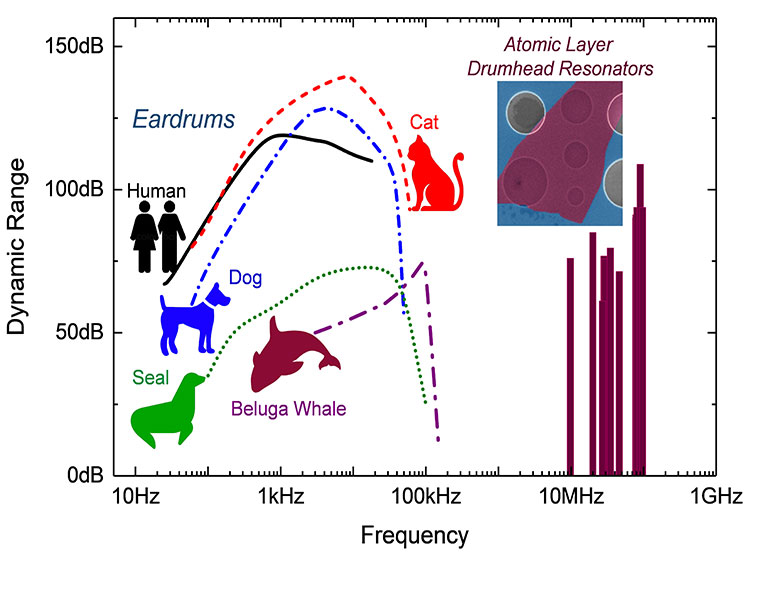By Warren Miller, contributing writer
Miniaturization is the watch word in technology — from laptops to smartphones to everything in between, the smaller the better. Still, there has to be a threshold that just cannot be crossed — after all, how much smaller can it all get? A research team at Case Western Reserve University may have just set the new standard in miniaturization by developing a drumhead capable of receiving and transmitting signals over a much greater range of frequencies than the human eardrum — and tens of trillions of times smaller.
The new device is so small that it’s 100,000 times thinner than the human eardrum. They also have recorded the highest dynamic range ever reported by this type of vibrating transducer, representing a possible breakthrough in the fields of sensing and communication. Its predecessors have all been much larger (how could they not be?) and operated within a lower range of frequencies, a range closer to that which the human ear can detect.
“What we’ve done here is to show that some ultimately miniaturized, atomically thin electromechanical drumhead resonators can offer remarkably broad dynamic range, up to ~110 dB, at radio frequencies (RFs) up to over 120 MHz,” said Phillip Feng, co-author of a paper published in last month’s issue of the journal Scientific Advances. “These dynamic ranges at RF are comparable to the broad dynamic range of human hearing capability in the audio bands.”

Device trillions of times smaller than human eardrum offers cat-like hearing. Image Source: Case Western University.
Dynamic range, for the uninitiated, is the differential between a signal’s ceiling and its floor. Typically measured in decibels, the dynamic range of a healthy human eardrum is about 60 to 100 dB. Human hearing is only effective in frequencies ranging from about 10 Hz to 10 kHz. House cats, by comparison, can still effectively hear frequencies in the 100-kHz range. Feline eardrums are still significantly larger than the Case Western Reserve team’s transducers as well.
It may be difficult to predict where this type of technology might ultimately end up, but it has much broader applications than just “hearing.” These tiny resonators might be the key to combining electronic, mechanical, and optical elements — all working together in atomic-layer semiconductor devices. Could they be used to efficiently transform energy from one form to another and even switch or process data ultra-efficiently?
Now, this is just wild speculation, but if some of the more unique materials that we have recently discovered with piezoelectric properties, superconductivity, and super-efficient energy storage could be combined, we might see some almost “magical” devices. How about smart mobile devices that can locate and move to needed energy sources to “power up?” Or perhaps sensors that follow signals of interest to their sources to study and report back? Even tiny mobile bots that communicate with each other and group together to cooperatively work on and complete tasks might be possible. Perhaps we will even find that devices with the ability to self-repair and self-replicate are possibilities. Materials science seems likely to continue to surprise us — hopefully in good ways.
Advertisement
Learn more about Electronic Products Magazine





